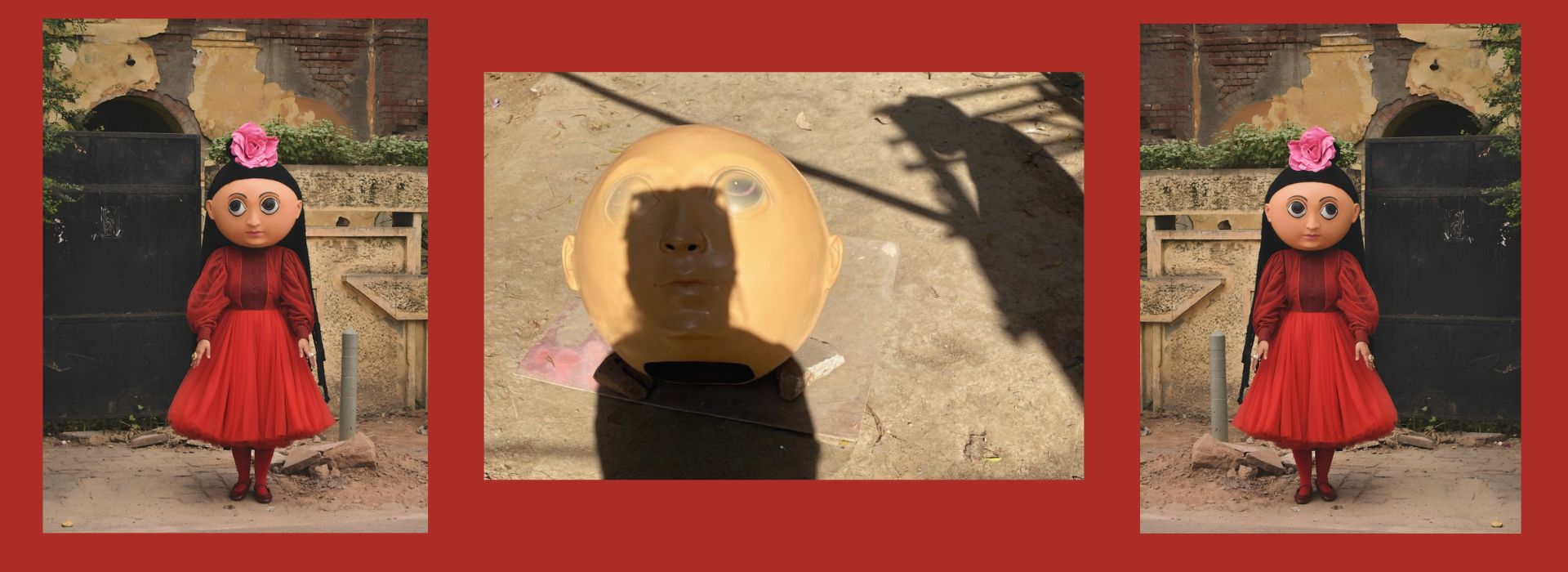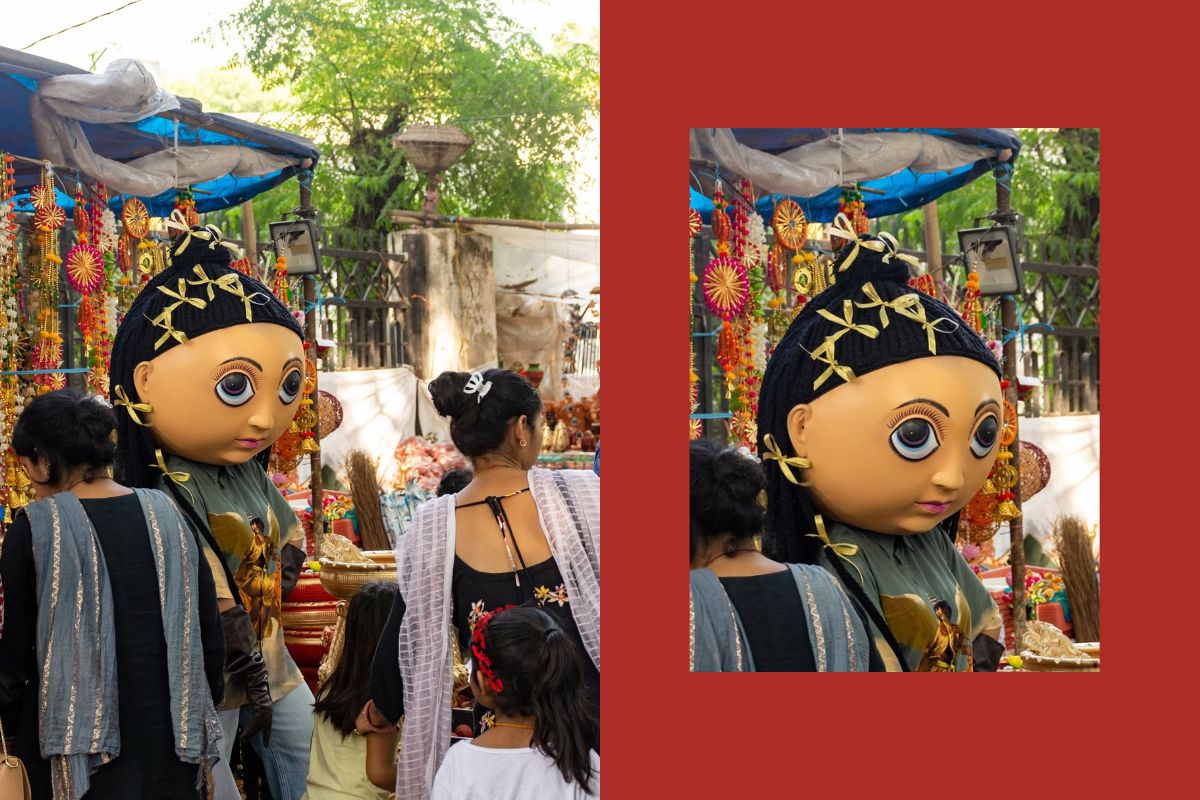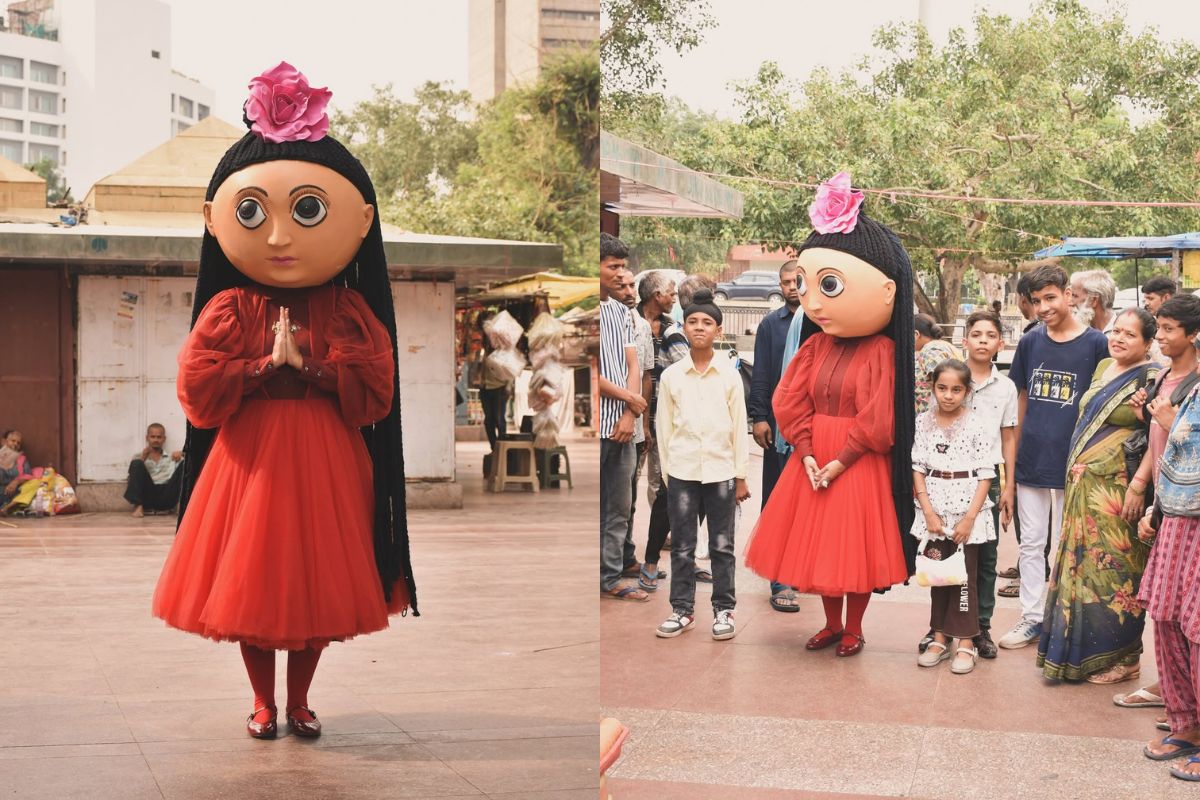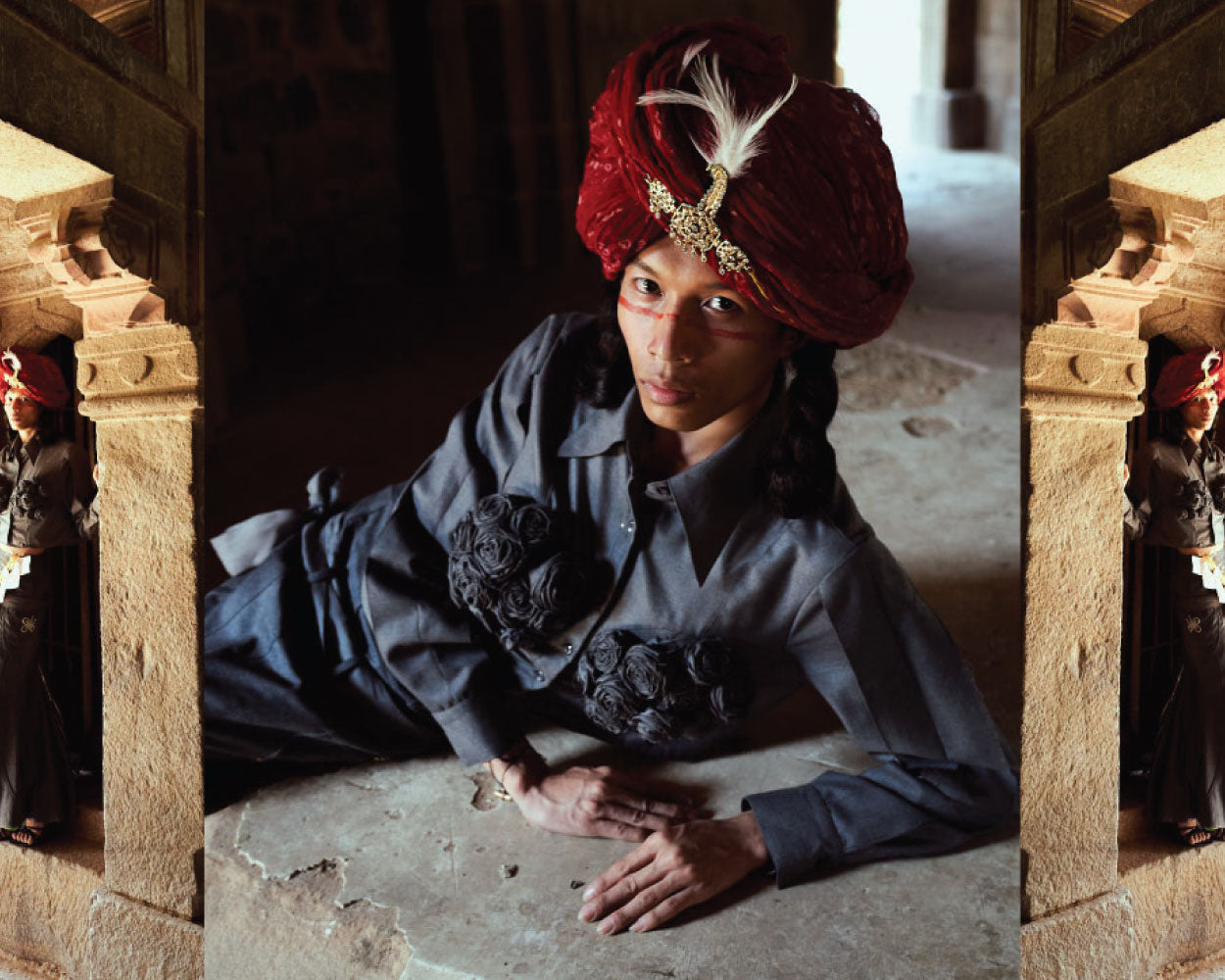There’s Something About Paño
Sanskriti Sharma shares her journey to this larger than life persona
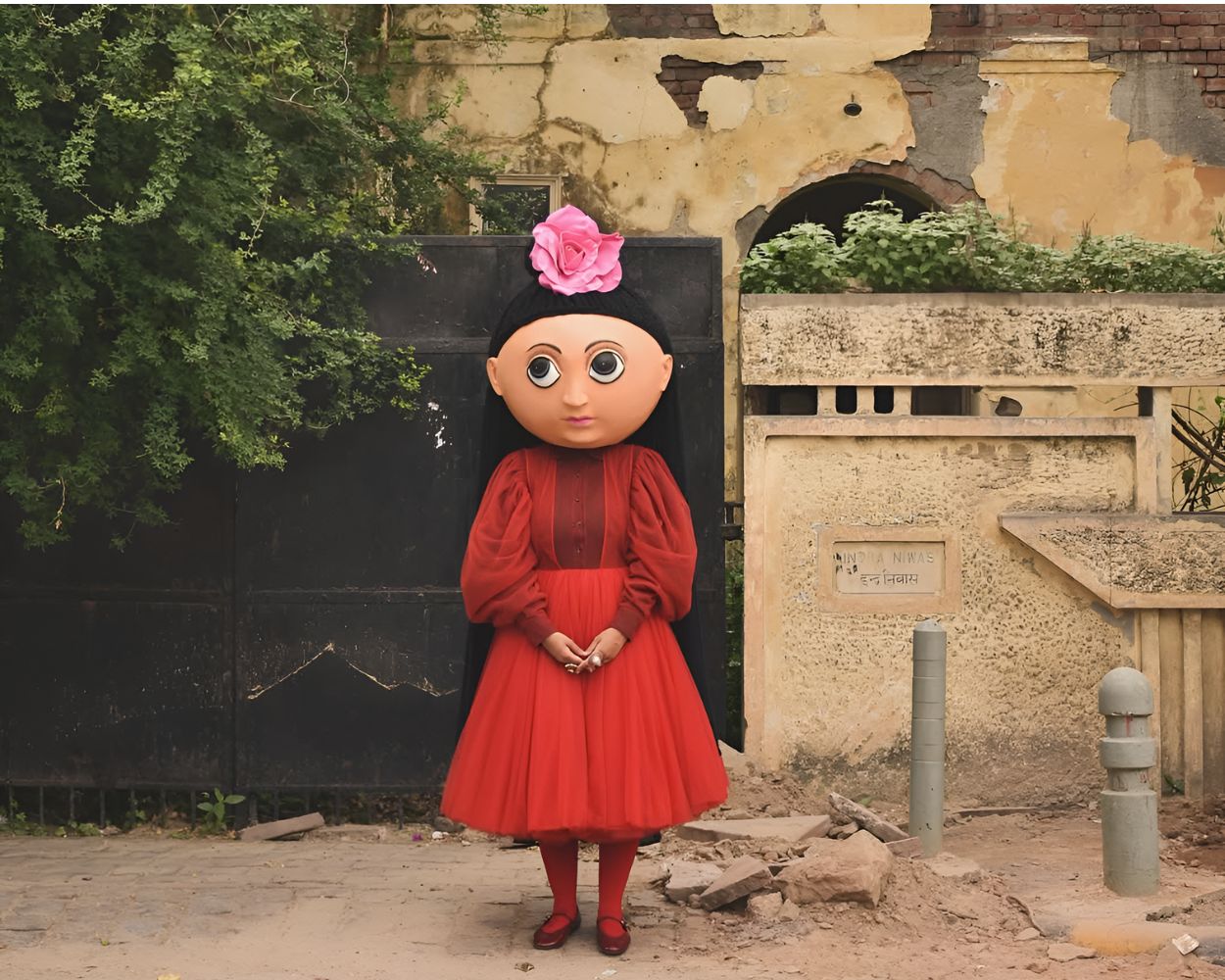
While most may know her as Paño, the masked figure with wide eyes, the journey to this larger-than-life persona began much earlier.
“I’m Sanskriti Sharma, but most people know me as Paño,” she begins. “A whimsical character who wears a big doll mask and travels through stories. I’ve always been drawn to imagination and the quiet power of ordinary people’s lives.”
A background in design and a deep love for storytelling laid the foundation. “Somewhere along the way, I realized that the world is full of tiny, beautiful moments that often go unnoticed,” she says. It’s from this understanding that Paño was born—‘out of that love—for listening, observing, and weaving imagination into the everyday reality.’
But Paño is more than performance. “She’s not just a mask, but a bridge between the real and the imaginary,” Sanskriti explains. “Through her, I get to meet strangers, step into their shoes, and retell their stories with heart. It’s part performance, part memory, part magic.”

What drew her to the mask wasn’t concealment—but revelation. “I’ve always found masks fascinating—not because they hide, but because they reveal in different ways. Wearing the mask helped me disappear, so I could fully see others.”
“She felt necessary because in a world full of noise and spectacle, she offered stillness. She felt urgent because so many voices go unheard. And she felt inevitable—because I think I’ve been carrying her quietly inside me all along,” she reflects. “I didn’t choose Paño. She chose me.”
Becoming Paño
Being in character as Paño, Sanskriti says, is unlike acting. “It feels like stepping into a quiet river. Everything slows down.” There’s a shift—not just outwardly, but inwardly too. “It’s more like remembering a version of myself that’s softer, more open, more curious.”
She describes accessing parts of herself usually kept beneath the surface: “tenderness, wonder, a kind of gentle bravery.” The experience invites deeper connection. “She helps me ask questions I wouldn’t normally dare ask, and people respond in ways that are surprisingly raw and honest.”

The instincts that emerge when she becomes Paño are specific, she says: “A deeper sense of empathy, a slower rhythm of being. It’s as if when the mask goes on, the noise fades—and all that remains is the present connection with the moment.”
The instincts that emerge when she becomes Paño are specific, she says: “A deeper sense of empathy, a slower rhythm of being. It’s as if when the mask goes on, the noise fades—and all that remains is the present connection with the moment.”
